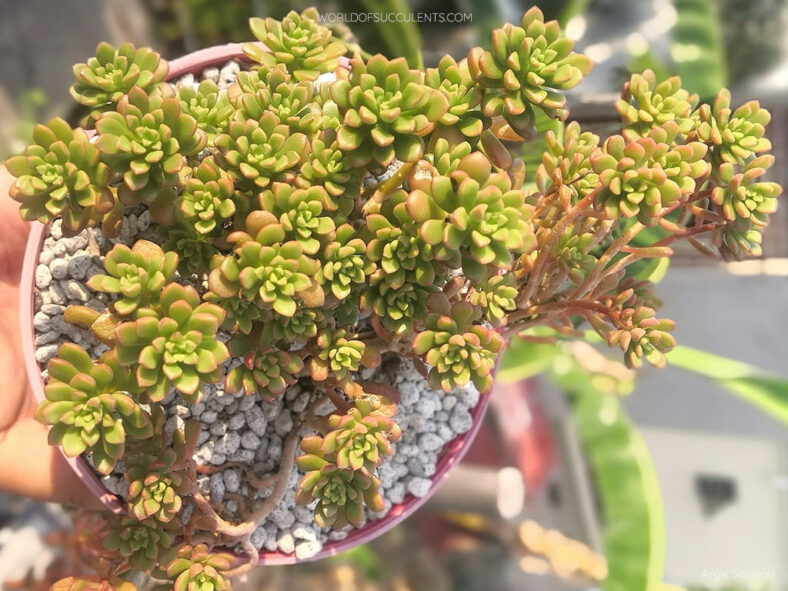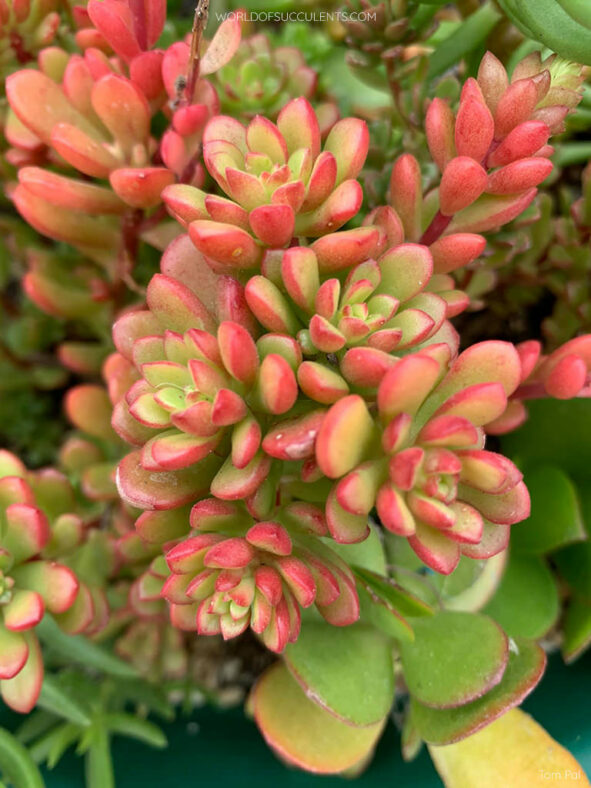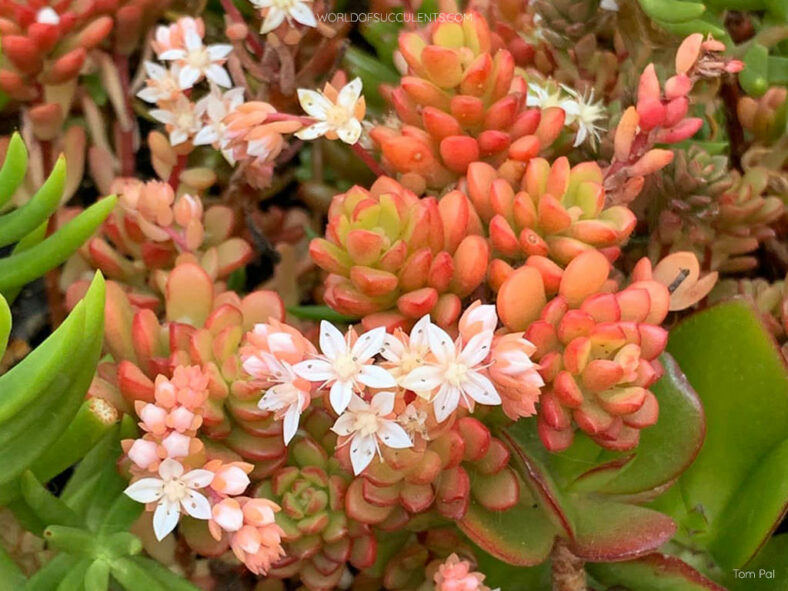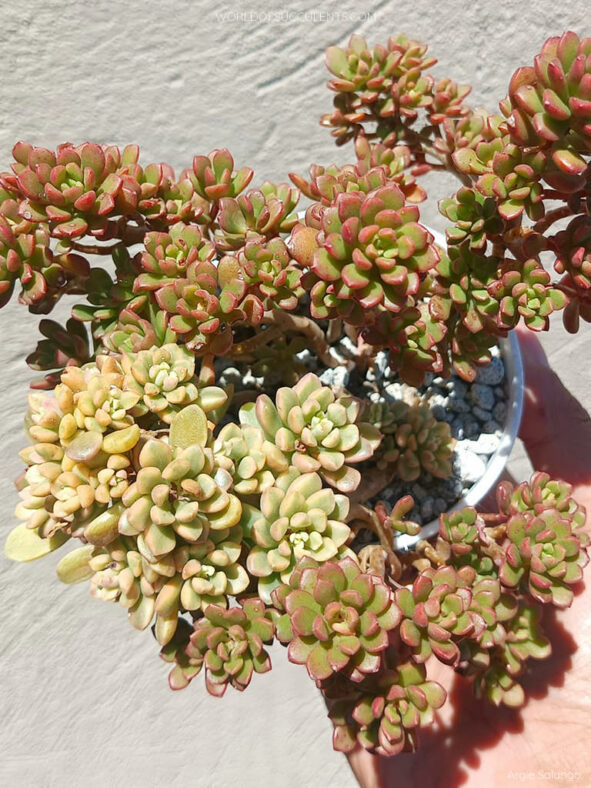Scientific Name
Sedum 'Joyce Tulloch'
Scientific Classification
Family: Crassulaceae
Subfamily: Sempervivoideae
Tribe: Sedeae
Genus: Sedum
Origin
Sedum 'Joyce Tulloch' is a hybrid, probably resulting from a cross between Sedum versadense and Sedum lucidum. It was described by Ray Stephenson in Sedum Society Newsletter 70 (2004). Its origin is unknown.
Description
Sedum 'Joyce Tulloch' is a beautiful succulent subshrub with erect to decumbent, much-branched stems that bear fleshy, green leaves with a reddish tip and margins. The leaves are covered with very short hairs. They are flushed red when the plant is grown in full sun and more intensely colored on the lower surface.
The small, white, star-shaped, 5-merous flowers appear in spring in clusters on stalks, with bracts similar to the leaves.

How to Grow and Care for Sedum 'Joyce Tulloch'
Light: This succulent grows best in locations where it will enjoy the full sun for at least six hours daily. It will tolerate partial shade but will not thrive in deep shade. Keep your indoor plant in a sunny window or under artificial lights.
Soil: S. 'Joyce Tulloch' does not like to sit in waterlogged soil, so drainage is essential to prevent root rot. Choose a well-draining soil mix.
Temperature: This plant is tolerant of heat and freezing temperatures. S. 'Joyce Tulloch' can withstand temperatures as low as 20 °F (-6.7 °C). USDA Plant Hardiness Zones 9a to 11b, 20 to 50 °F (-6.7 to 10 °C).
Watering: Water thoroughly from spring through fall and wait for the soil to dry out before watering again. In winter, water your plant just enough to keep it from shriveling. Avoid wetting the leaves, stems, and flowers when watering.
Fertilizing: Feed with a balanced organic fertilizer in spring. Feeding is unnecessary if the plant is divided annually and provided with fresh soil.
Repotting: When your plant outgrows its current pot, move it to a larger container to better support it. Spring is the best time to repot S. 'Joyce Tulloch'. Make sure the soil is dry before you begin repotting.
Propagation: This succulent is propagated by taking stem or leaf cuttings in spring when it is in active growth.
Learn more at How to Grow and Care for Sedum.
Toxicity of Sedum 'Joyce Tulloch'
S. 'Joyce Tulloch' is not listed as toxic for people but can be mildly toxic to pets and children.
Links
- Back to genus Sedum
- Succupedia: Browse succulents by Scientific Name, Common Name, Genus, Family, USDA Hardiness Zone, Origin, or cacti by Genus
Photo Gallery
Click on a photo to see a larger version.


